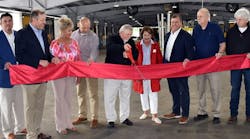They're more costly to buy and operate, and suffer significantly more downtime, yet drivers love them. Many dub them “hot rods” for their quick-off-the-block acceleration, coupled with nimble and responsive performance on the highway. That sums up the verdict rendered for 2002, 2004 and 2007 emissions-compliant engines and trucks by managers of three large fleets who spoke at the Technology & Maintenance Council annual meeting.
Dan Umphress, engineering managing director for FedEx Freight, Tom Newby, director of field maintenance for Old Dominion Freight Lines, and Steve Duley, vp of vehicle purchasing for Schneider National, all said that there's been a steady improvement in engine performance through each emissions standard, especially in terms of fuel economy.
Still, when measured against pre-emissions-regulation units, '02, '04 and '07 engines all cost successively more through each model year, especially in terms of purchase price, maintenance, fuel economy penalties and downtime.
“Our standard power unit is a 4×2 non-sleeper tractor with a 13L engine,” said FedEx's Umphress. “The '02 and '04 engines added about $4,000 to the price of our tractors, with '07 engines adding $7,000 per tractor. In the early days with '02 engines, we suffered a 16% loss in fuel economy compared to pre-emission control models. But we reduced that to a 3% loss by re-calibrating them. The '07 engines are within 3% of the fuel economy we're now getting with our '02 and '04 models, which should improve as we fine-tune them. We expected worse, so that was a surprise to us.”
Schneider's Duley reported that maintenance costs and downtime both sharply increased for all of the carrier's emissions-compliant trucks. Schneider estimates that maintenance costs compared to pre-emissions models are 62.8% higher for '04 and younger engines, 18.2% higher for engines built in the '05 and '06 model years, and 282% higher for ‘07 engines. Downtime for all the emissions-compliant trucks has increased 20%, with towing up 15%, relative to the rest of the fleet.
In terms of fuel economy, Duley said '04 and younger engines suffer a 4% loss, which shrinks to 3% for '05 and '06 models, then climbs to 5% for '07 engines.
With diesel fuel priced at $3/gal., it costs Schneider an extra $2,200, $1,700 and $2,800, respectively, in annual fuel costs for each tractor equipped with those emissions-compliant models, he said.
Duley added that roughly 2% of the fuel economy loss in '07 engines comes from more-frequent-than-expected regeneration of the diesel particulate filter, which Schneider hopes to adjust going forward, and noted that the '07 models weigh 350 lbs. more.
In terms of the total cost of emissions compliance, Duley said Schneider is paying 6.7 to 8.2¢/mi. more since October 2002 to buy, operate and maintain its trucks, along with paying a higher price for ultralow-sulfur diesel.
But all three managers noted that despite the cost increases they're seeing some silver linings in the adoption of emissions-compliant equipment.
“The best thing is that it's brought back personalized communication between the fleet and the truck and engine manufacturers,” said Newby. “We now have a dedicated contact person at the OEMs to handle our needs.”
And all three speakers stressed that their drivers really like the new emissions-compliant trucks. “They call them hot rods because they accelerate so fast,” said Umphress. “And acceleration improved regardless of the type of turbocharger system used, be it turbo compounding or variable geometry turbos.”


